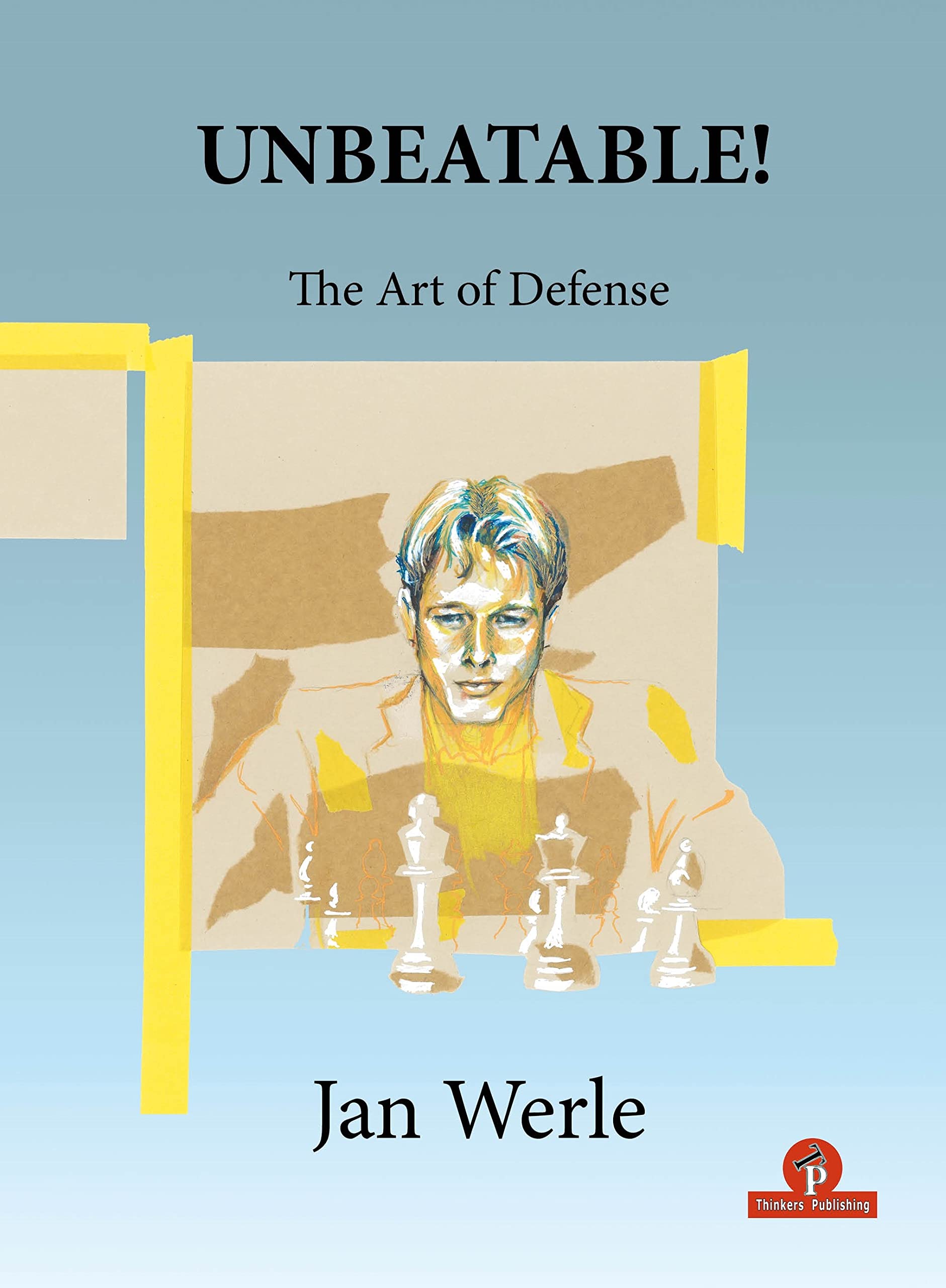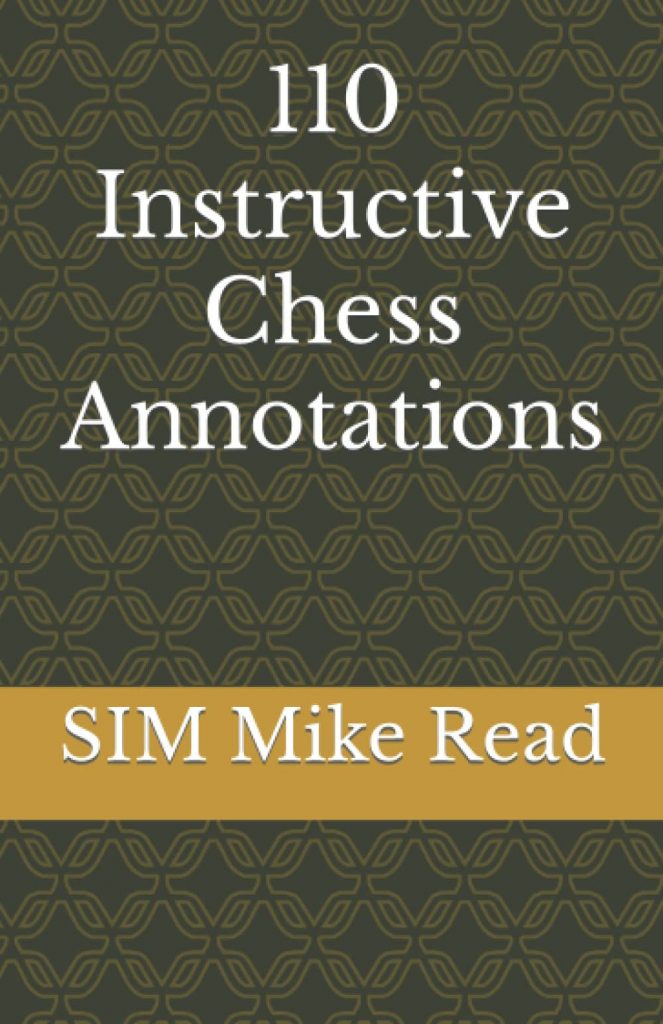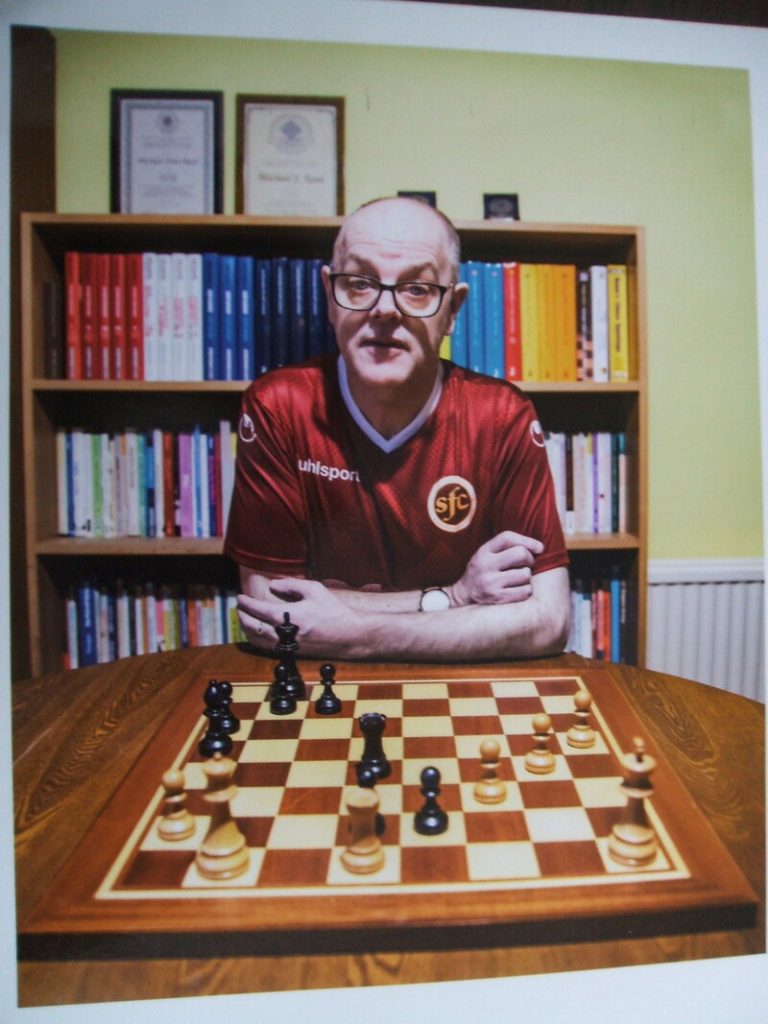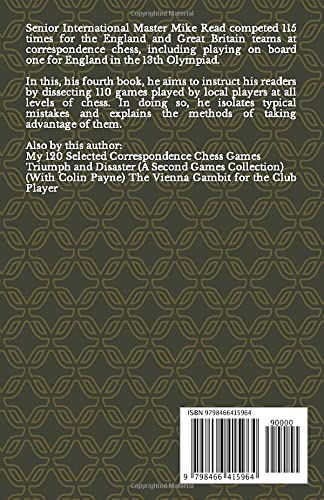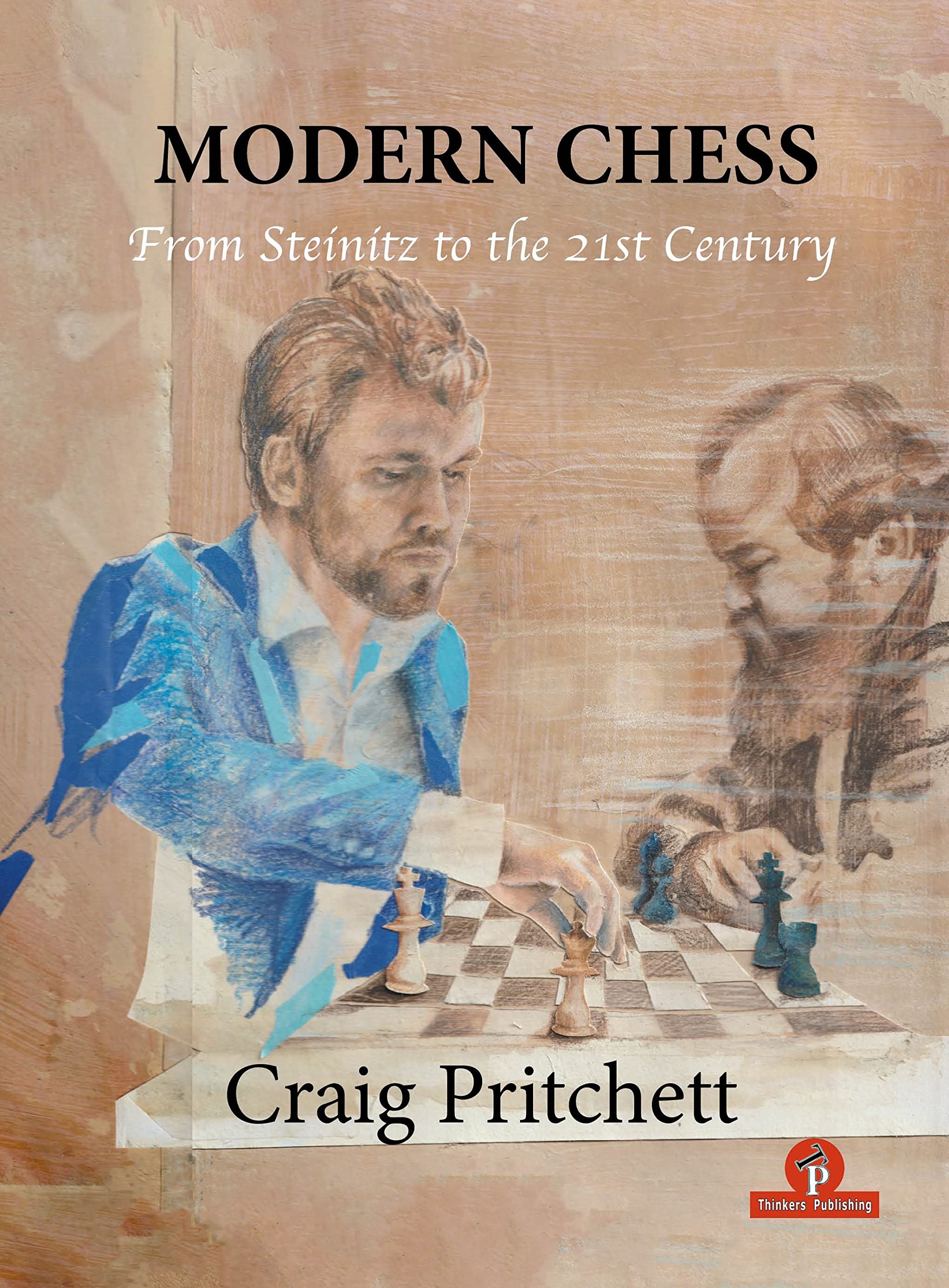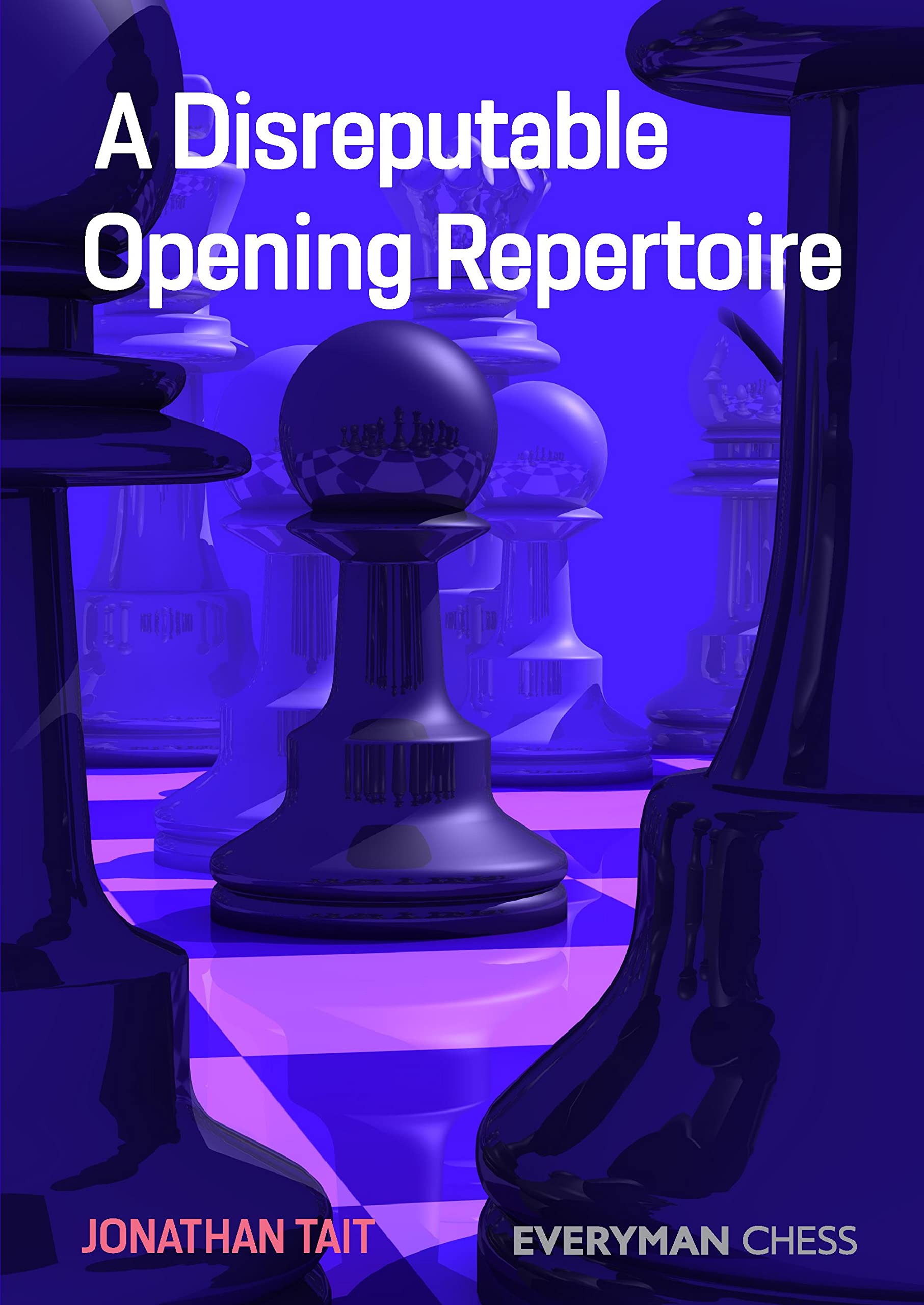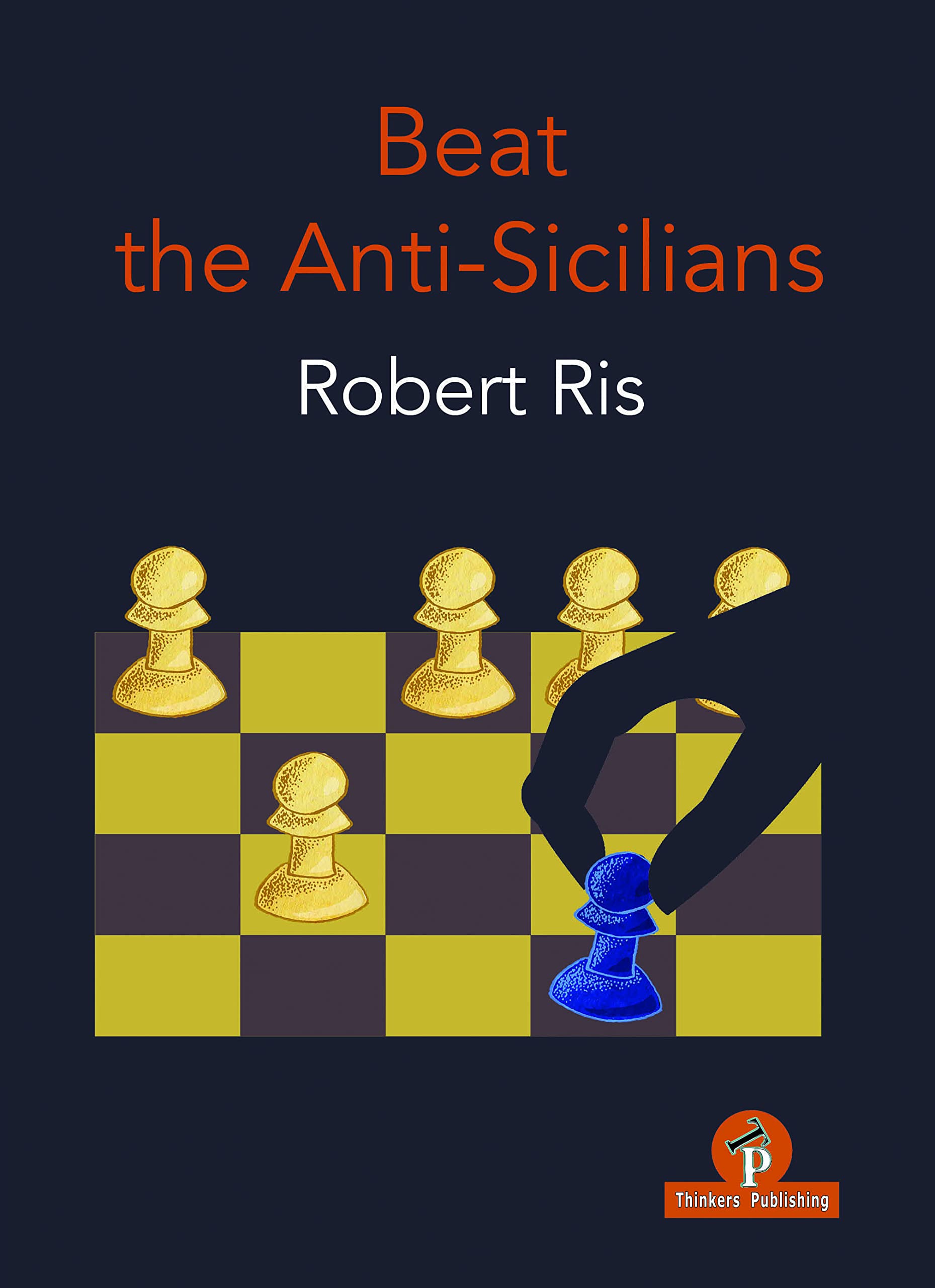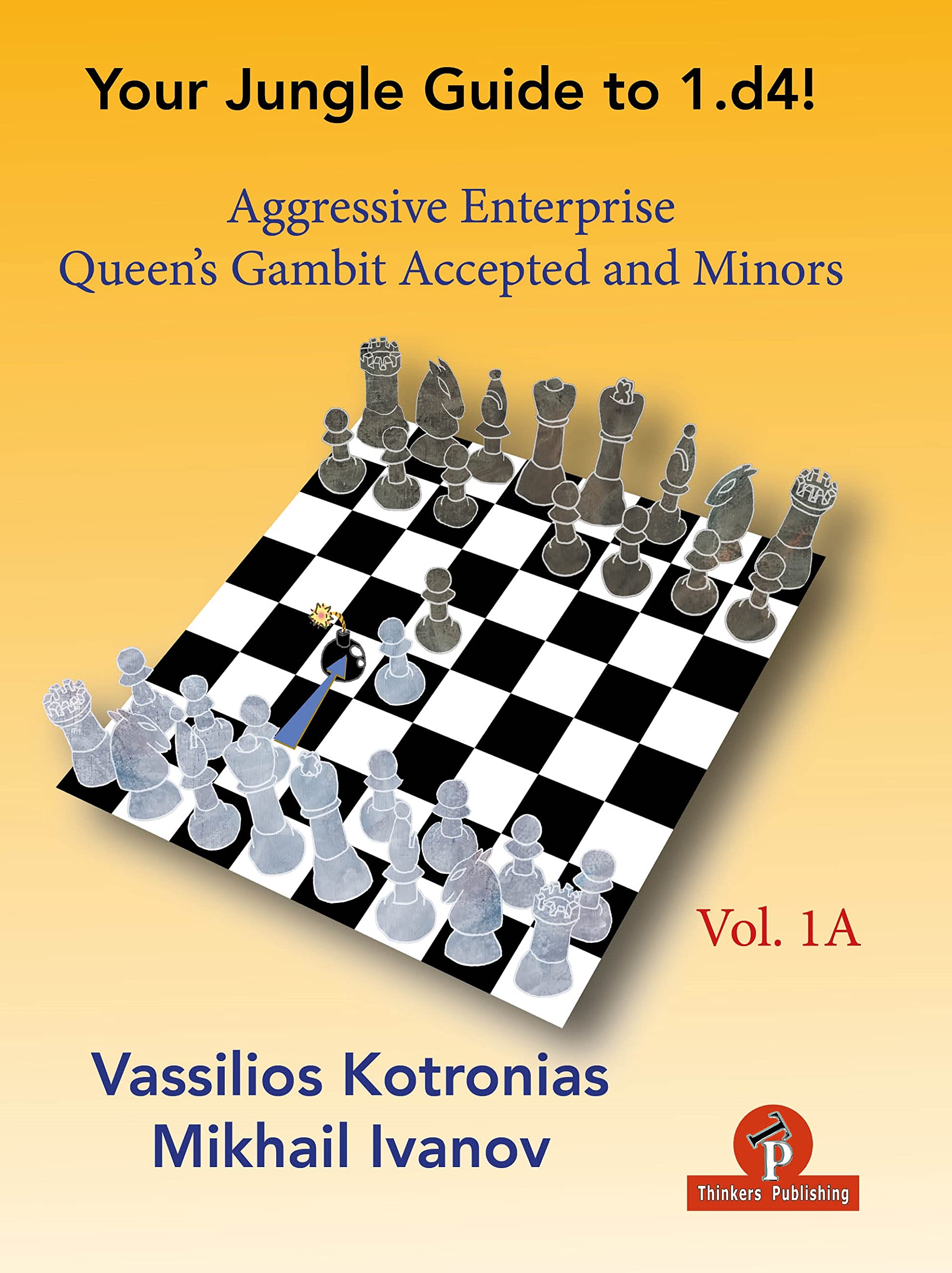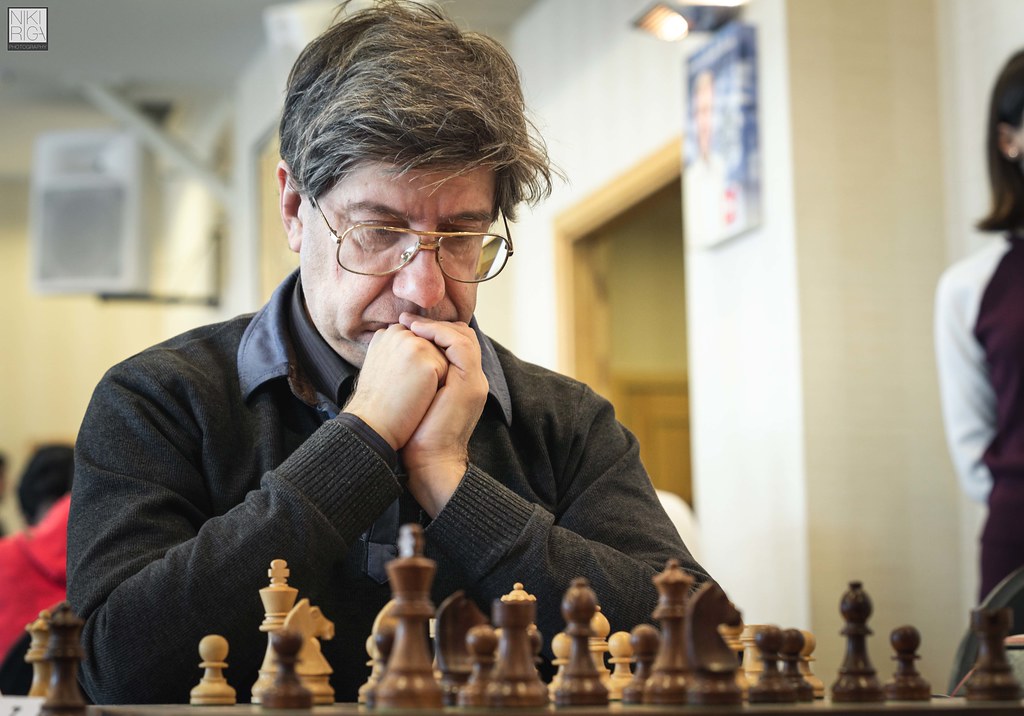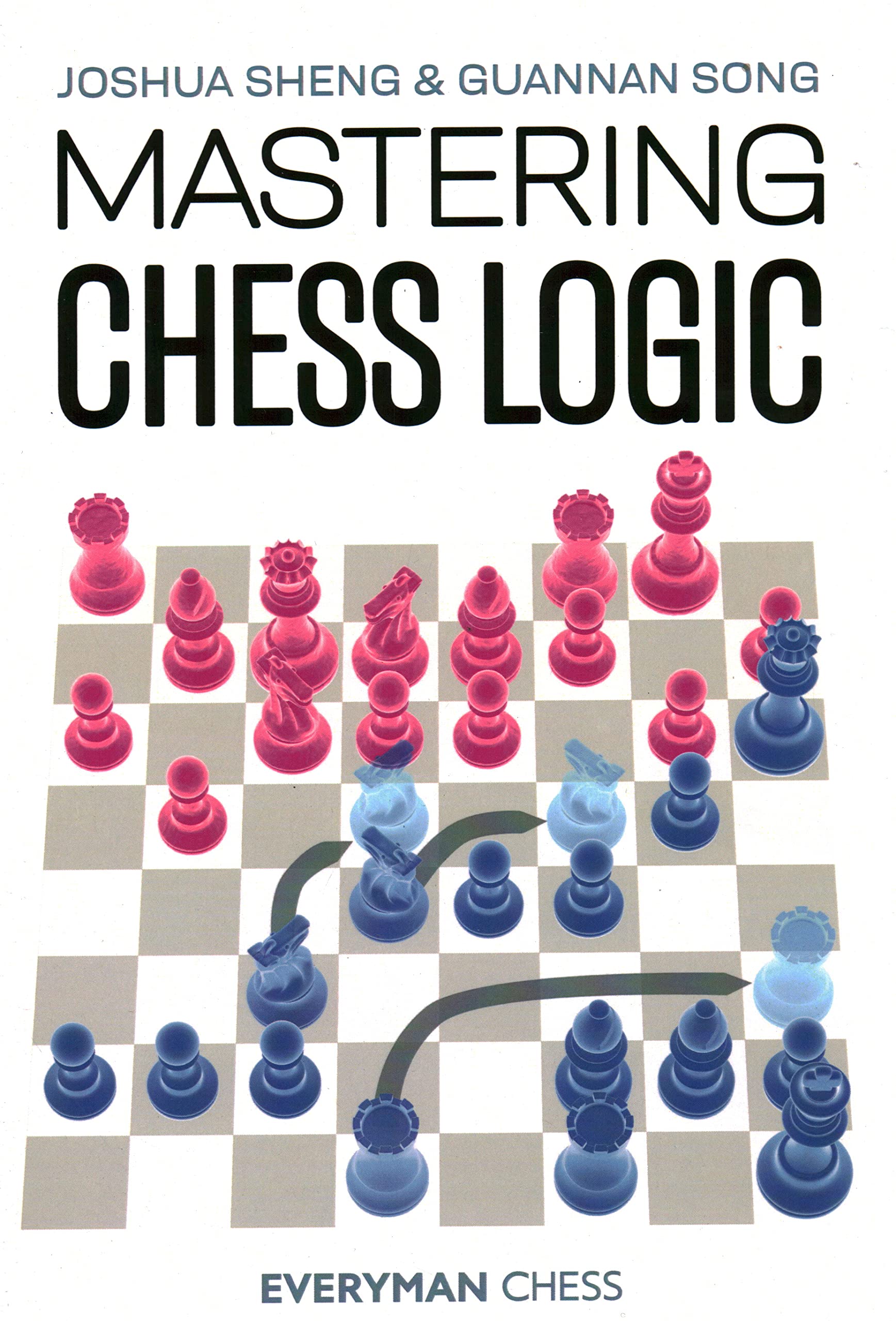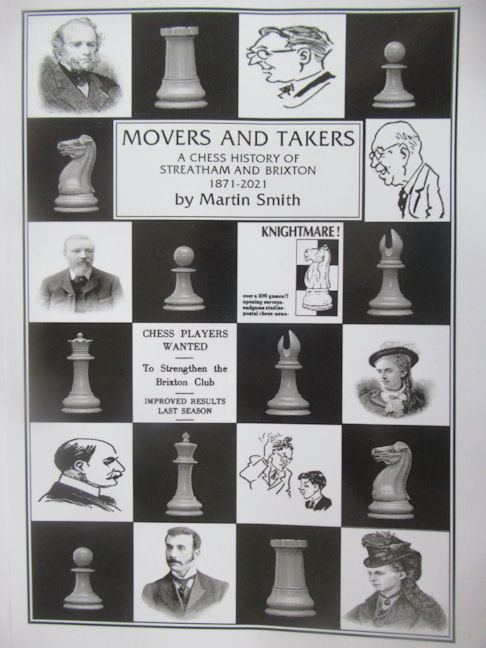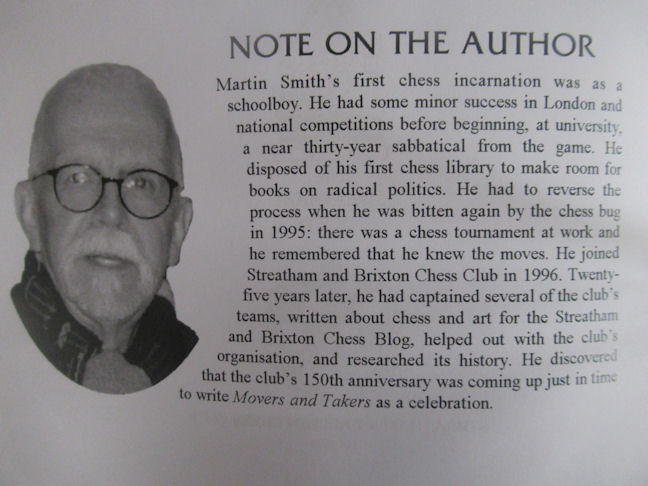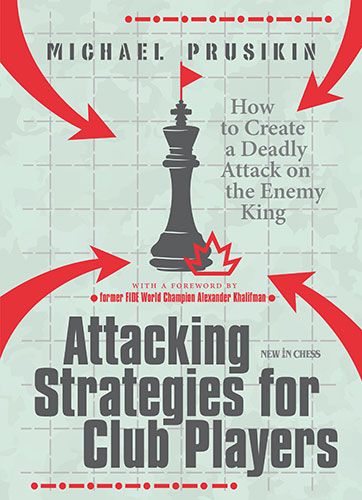
How to Create a Deadly Attack on the Enemy King, Michael Prusikin, New in Chess, 31-12-2021, ISBN-13 : 978-9056919740
From the publisher:
“Attacking your opponent’s king is not just a shortcut to victory, it’s also one of the most enjoyable and gratifying experiences in chess. If you want to win more games you should become a better attacker. Studying typical attacking motifs and ideas easily brings dividends while you are having a good time. Michael Prusikin presents the prerequisites and the rules for a King attack in a lucid and attractive manner. In 15 thematic chapters he teaches you how to assess the nature of the position, identify the appropriate offensive patterns, find the preliminary moves and conduct your attack in a clear and effective way. Battering rams, obstructive sacrifices, pawn storms, striking at the castled position, sacrificing a knight on f5, Prusikin demonstrates the most important patterns of attack with lots of clear and well chosen examples. Next, Prusikin tests your newly acquired insights and your attacking intuition with exercises covering all the themes and motifs. You will find that studying Attacking Strategies for Club Players is both entertaining and rewarding.
Michael Prusikin is an International Grandmaster and a FIDE Senior Trainer from Germany. In 2009 he was the co-winner of the German Championship. Several times he has been voted German Chess Trainer of the Year. He writes the tactics column in the German magazine SCHACH.”
In his foreword to this book, GM Alexander Khalifman explains that the subject of attack on the enemy king has been the subject of many recent books, many of which suffer from a combination of defects: lack of originality, exaggerated sensationalism, complication and subjectivity. I wouldn’t disagree in principle, but who doesn’t love any book featuring ferocious attacks, brilliant combinations and beautiful sacrifices? Khalifman believes this book is different because it explains how to set up an attack.
Here’s what Prusikin has to say in his introduction:
… the theme of this book is not basic attacking motifs. I assume you are already familiar with these or I would recommend that, if so inclined, you read the classic The Art of Attack by Vladimir Vukovic or its modern counterpart Essential Chess Sacrifices by David LeMoir. In this book we shall address the strategic requirements for a successful attack on the king and some lesser-known attacking motifs, though no less relevant in practice. I hope this will be both interesting and useful for players with an Elo rating between 1500 and 2300.
Chapter 1 is just two pages long. We learn the prerequisites for successfully attacking the king: lead in development/uncastled opposing king, space advantage in the vicinity of the opposing king, few defensive pieces near the opposing king, and weakened pawn protection. Then we have some tips for carrying out a successful attack: use all your pieces, open lines, don’t be afraid to sacrifice and don’t waste time.
Chapters 2 to 16 each feature a different attacking idea, with some brief instructions and some examples from play.
Chapter 2: King in the centre.
Here’s an extract from a game which particularly impressed Prusikin, between a 17-year-old Egyptian and a higher-rated 16-year-old Iranian (Fawzy – Maghsoodloo Abu Dhabi 2017).
16. Nb5!!
An astonishing sacrifice, the idea of which doesn’t reveal itself until you have seen White’s 19th move.
16… axb5 17. axb5 Qb7 18. Rxa8+ Qxa8
And now what? Why has White actually given up the piece?
19. f5!!
The next hammer blow, a left-right combination in boxing parlance.
19… Nxe5
A) 19… gxf5 20. Qh5 +-
B) 19… exf5 20. e6! +-
C) 19… Bxe5 20. fxe6 fxe6 21. Nf7+-
20. fxe6 f6 21. Bxe5 fxe5 22. Rf7 Bf8 23. Nxh7
23. Qf1 Bc5+ 24. Kh1 Ne7 25. b6 Qc6 26. Qf6! Rg8 27. Rxe7+ Bxe7 28. Qf7+ Kd8 29. Qxg8+ Qe8 30. Nf7++– was the alternative solution.
23… Bc5+ 24. Kh1 Ne7
Fawzy would have had to demonstrate similar, perhaps even more beautiful motifs after the defensive move 24… Be7 25. b6! Kd8 (25… Nh6 26. Nf6+ Bxf6 27. b7 Qb8 28. Qxd5 Nxf7 29. Qd7+ Kf8 30. Qxf7#) 26. Qf1 Nh6 27. Qb5 Qb7 28. Rf1!! (Wonderful geometry: the rook swings to the a-file!) 28…Rxh7 29.Ra1 Bf8 30.Ra7 Nf5 31.Rxb7 Rxb7 32.Qxd5+ Nd6 33.Qc5 and White wins.
25. Qf1!!
Threatens 26. Rf8+ but at the same time ‘eyes up’ b5 – the queen in all her glory!
25… Nf5 26. b6!! Qc6 27. b7 Ba7 28. Qxf5+!
Not the only way to win, but certainly the most spectacular and at the same time the most convincing solution!#
28… gxf5 29. Nf6+ Kd8 30. e7+
Black resigned
What a game! The modern-day ‘Immortal’!
(A few comments on this extract: 1) I’ve omitted a couple of diagrams from the book 2) Prusikin doesn’t mention that Black could have held the position by playing 17… Rxa1, which he might have found had he foreseen 19. f5! and 3) if you have MegaBase you’ll find the same annotations (in German) there.)
Chapter 3: Obstructive sacrifice: a sacrifice to impede your opponent’s development: for instance White playing a pawn to e6.
Chapter 4: Attacking the king without the queen: attacks in queenless middlegames or even in endings.
Chapter 5: Pawn storm with opposite-side castling.
Chapter 6: Pawn storm with same-side castling.
Chapter 7: Using the h-pawn against a fianchetto.
I was very struck by this miniature: Gomez Sanchez – Otero Acosta (Santa Clara 2017). I’ll pick up the game with Black about to play his 9th move in this very typical Réti Opening.
8… h5!
The first game of this chapter, Steinitz – Mongredien, was probably the first time that the fianchetto, rather unusual at the time, had been attacked in such a daring way. Here too, the Steinitz attack seems to pose considerable problems for the Réti set-up.
9. d3
(There’s a long note here, concluding that 9. cxd5 is probably White’s best move here, which I’ll omit from this review.)
9… h4 10. Nxh4?
The beginning of the end. Once again, the only feasible defence was to open the centre: 10. cxd5! exd5 11. e4, although even here White would have had some difficult practical problems to solve, for example: 11… hxg3 12. hxg3 d4!? 13. Ne2 Qa5! with the idea of switching to h5. Black gets a dangerous attack.
10… Rxh4! 11. gxh4 Nh5 12. Qe1?
The final mistake. 12. f4 Nxf4 13. Qe1 would still have offered resistance, although Black would have had a clear advantage.
12… Bf3!!
Blocks the f-pawn; 12… Qh4? 13. f4.
13. Bc1 Qxh4 14. h3 Nf4 15. Bxf3 Qxh3 0-1
I suppose Prusikin might have mentioned that the idea behind Black’s 12th move is well known from, for example, a famous Fischer – Benko game.
Chapter 8: Using the g-pawn to destroy your opponent’s king protection.
Chapter 9: The nail in the coffin: a pawn on f6 or h6 in front of an opposing castled king.
Chapter 10: Doubled g-pawns, which can be used as an attacking weapon, or, on the other hand, can weaken the king’s defence.
Chapter 11: Using pieces to attack the castled position.
Chapter 12: The Grand Prix Attack: attacking a king behind a fianchettoed bishop with f4-f5, Qe1-h4, Bh6 etc.
Chapter 13: The knight on f5: sacrificing a knight on this square where it can be captured by a pawn on g6.
Chapter 14: Long bishop on b2: how a fianchettoed queen’s bishop can help your kingside attack.
This example is taken from Zsuzsa Polgar – Chiburdanidze (Calva Ol W 2004)
Here we join the game at its culmination: the dark-squared battery is already set up, the g-pawn has chased away the knight on f6 and with her last move … g7-g6 Black has carelessly weakened the long dark diagonal. In spite of all this, achieving the said culmination is anything but easy.
14. Nxe5!! Nxe2!
Was the Georgian former World Champion relying on this counter-attack?
A) 14… Qe7 15. Be4!! dxe5 16. 16. Bxb7 Nxe2! 17. Kxe2 Qxb7 18. Qxe5 f6 19. Qe6+ Qf7 20. Qxf7+ Rxf7 21. Bxf6+-
B) 14… dxe5 15. Qxe5 f6 16. Qxf4 gxf5 17. gxf6+ +-
15. Nxf7!!
If the first knight move was obvious, now comes the real ‘hammer blow’!
After 15. Kxe2? dxe5 16. Bc2 (16. Qxe5?? Re8) 16… Nc6 the advantage would have switched to Black.
15… Nxc3 16. Nh6+ Kg7 17. Bxc3+ Rf6 18. Bxf6+ Qxf6 19. gxf6+ Kxh6 20. Be6+-
Black could have resigned here but struggled on until move 39.
Chapter 15: Interference: specifically here playing a minor piece to the opponent’s back rank to block out an opposing rook.
Chapter 16: Breakthrough on the strong point: sacrificing on a square which appears to be very well defended.
At the end we have the seemingly obligatory quiz: 50 puzzles for you to solve. While some involve finishing off your attack, others require you to find a plan to put your attack in motion. You’re not told which is which.
You’ll see from the extracts above that, at one level, this is a lovely book crammed full of dashing attacks on the enemy king and beautiful sacrificial play. The expertly annotated examples are conveniently grouped by theme and with some helpful snippets of advice on how to identify when an attack of this nature would be appropriate, and how to carry it out.
As such it will, as the author suggests, appeal to anyone from, say, 1500 to 2300 strength. The themes won’t be new to stronger and more experienced players but they’ll still benefit from seeing them in action. While the author points out that the explanations at the start of each chapter are short to allow more space for games, they sometimes seemed rather perfunctory to me.
I’m also not sure that the book is entirely free from the flaws Khalifman has noted in other volumes of this nature. Yes, it’s a bit different from other books in the way it’s organised, and, while many of the games, including quite a few from Prusikin’s own games, were new to me, there were also some frequently anthologised chestnuts.
I’m also not convinced that the book is free from exaggerated sensationalism. The annotations, and sometimes the exclamation marks, perhaps tend towards the hyperbolic. As Khalifman rightly points out, ‘you don’t learn anything abut physics or chemistry by watching a fireworks display’, but the examples do tend to be firework displays rather than the more mundane attacks that are more likely to occur in your games.
It’s a large and complex subject, and, to do it full justice based on 21st century chess knowledge, you really need 400 or 500 pages rather than the 192 pages we have here.
The book was originally published in German and has been competently translated by Royce Parker, so the language problems sometimes apparent in books from this publisher don’t arise here. The production standards are high, and there’s a refreshing lack of typos.
It’s an entertaining and instructive book which will be enjoyed by a wide range of readers, but is it an essential purchase? Probably not.
Richard James, Twickenham 9th June 2022

Book Details:
- Softcover: 192 pages
- Publisher: New In Chess (31 Dec 2021)
- Language: English
- ISBN-10:9056919741
- ISBN-13:978-9056919740
- Product Dimensions: 17.02 x 23.11 cm
Official web site of New in Chess

How to Create a Deadly Attack on the Enemy King, Michael Prusikin, New in Chess, 31-12-2021, ISBN-13 : 978-9056919740

